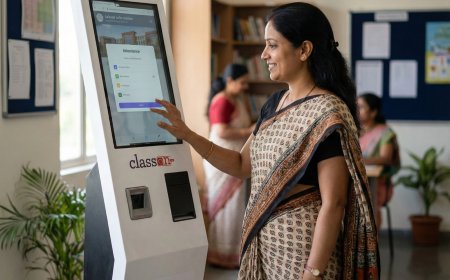Should Smartphones Be Allowed in Classrooms?
The debate over smartphone use in classrooms intensifies as educators, parents, and students discuss its impact on learning, focus, and engagement.

The use of smartphones in classrooms has sparked an ongoing debate among educators, parents, and students. While some argue that these devices enhance learning and provide access to vast educational resources, others worry about distractions, declining focus, and increased screen time. Schools worldwide are grappling with policies that balance technology’s benefits with its potential downsides. As discussions continue, it’s essential to examine both sides of the debate to determine how best to integrate smartphones into education.
1. Enhancing Learning with Technology
Advocates of smartphone use in classrooms highlight how technology can improve learning experiences. Educational apps, online resources, and digital collaboration tools help students grasp complex topics, engage in interactive lessons, and stay organized with digital planners. Many teachers incorporate smartphones to conduct quick research, take quizzes, and participate in virtual discussions.
2. The Risk of Distractions
On the other hand, critics argue that smartphones cause distractions. With social media notifications, messaging apps, and gaming options readily available, students may find it difficult to concentrate during lessons. Teachers often struggle to keep students focused, leading to lower attention spans and decreased academic performance.
3. Access to Online Resources
Smartphones provide instant access to a wealth of information, enabling students to research topics beyond textbooks. Online educational platforms, e-books, and video tutorials offer additional support for understanding lessons, fostering independent learning and curiosity.
4. Impact on Classroom Discipline
The presence of smartphones in classrooms poses challenges in maintaining discipline. Unregulated use can lead to students secretly using their devices for personal activities, causing disruptions. Many educators believe that enforcing strict smartphone policies helps create a more structured learning environment.
5. Smartphones for Emergency Situations
One of the strongest arguments in favor of smartphones is their usefulness in emergencies. Students can quickly contact parents, report incidents, or use navigation tools if needed. Many schools acknowledge this aspect and allow controlled smartphone usage for safety reasons.
6. Encouraging Responsible Usage
Instead of outright banning smartphones, some schools focus on teaching responsible usage. Implementing digital literacy programs helps students understand appropriate smartphone behavior, cyber safety, and time management, preparing them for a tech-driven future.
7. The Social Interaction Debate
Smartphones can negatively impact face-to-face communication among students. Excessive screen time often reduces verbal interactions, leading to weaker social skills. Schools that limit smartphone use during breaks encourage students to engage in real conversations and build stronger interpersonal relationships.
8. Cheating and Academic Integrity Concerns
With smartphones offering easy access to online answers, cheating in exams and assignments has become a concern. Schools enforce strict policies and monitor usage during tests to maintain academic integrity. Some institutions even use software to prevent digital cheating.
9. Schools Implementing Strict Policies
Many schools have introduced smartphone-free zones or designated usage times to strike a balance. Some institutions provide lockers where students store their phones during class, ensuring they remain focused while allowing limited access for necessary use.
10. The Future of Smartphones in Education
As technology evolves, the role of smartphones in education is likely to expand. With artificial intelligence, augmented reality, and adaptive learning apps advancing, schools may integrate smartphones more effectively into curriculums. However, striking the right balance between educational benefits and minimizing distractions will remain a crucial challenge.
Conclusion
The debate over smartphone use in classrooms is far from settled. While these devices offer undeniable educational benefits, concerns about distractions, discipline, and academic integrity persist. Schools must develop policies that encourage responsible smartphone use while maintaining a productive learning environment. As technology continues to shape education, finding the right approach to smartphone integration will be key to fostering both knowledge and discipline among students.




























